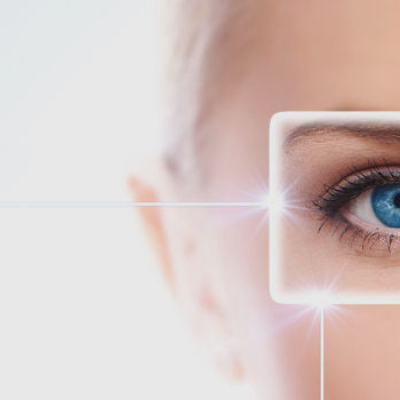Prism lenses can improve vision for clearer, more comfortable binocular vision.
Prism lenses, also called yoked prisms, are often prescribed by eye doctors for patients who are experiencing double vision, or are having difficulty with binocular vision.
In some cases, prisms are prescribed to be infused into lenses for daily wear. In other cases, prism lenses are used as a therapeutic tool in order to improve the patient’s attention, improve eye-brain connections, and provide feedback.
Yoked prisms can help to improve the communication between the eyes and brain to increase accurate visual processing.
Yoked prisms are added to prescription eyeglass lenses to enhance the way light focuses onto the retina in the back of the eye, for clearer, more comfortable vision. Prisms are unable to focus light in the way corrective lenses can, but they are able to deflect light, thereby improving the way light is focused.
Prisms are also able to change the timing of when light enters the eye, and therefore can have a positive effect on the visual, auditory, vestibular, and proprioceptive systems.
Schedule an eye exam with your vision therapy eye doctor so that they can diagnose and treat your binocular vision problems.
SEE RELATED: What’s the Deal with Prism Lenses?
Yoked prisms and vision therapy
Yoked prisms are used during vision therapy for a variety of vision conditions:
- Strabismus (crossed-eyes)
- Motion sickness
- Vestibular disorders
- Drooping eyelid (ptosis)
- Learning disabilities
- Adapting to multifocal lenses
- Head trauma or brain injury
Yoked prisms can help train the eye-brain connections, to improve the visual skills needed for clear and comfortable binocular vision.
Yoked prism lenses can help to improve:
- Eye tracking
- Eye movements
- Eye-brain communication
- Sports performance
Benefits of prism based vision therapy exercises
Using prisms during vision therapy has many benefits:
- Prisms create changes in the eyes and brain, and enhance depth perception.
- Prisms enable objects to appear in a different location, “tricking” the eye into an aligned position.
- Prisms enable clearer, more comfortable binocular vision.
- Prisms enable the eye doctor to measure changes in the patient’s eyes, as they practice their exercises.
- Prisms enable free movement during vision therapy exercises, while other therapeutic tools may restrict movement or peripheral vision.
How do prisms enhance vision therapy?
Vision therapy exercises stimulate accommodation, peripheral awareness, eye movements, convergence, and other visual skills. Prism-based therapy exercises can facilitate changes in all of these visual skills areas.
Prism lenses also facilitate changes in posture, balance, coordination, and cognition.
While wearing prism lenses during therapy sessions, the patient not only receives visual information, but also vestibular, proprioceptive, and tactile information. All of this new information forces the patient to be aware and actively involved in the learning process, as their “new” vision is trained.
Yoked prism lenses are a powerful therapeutic tool that serve to actively train the brain for improved processing of visual information, and enhance the way vision therapy exercises are performed.
LEARN MORE: Guide to Neuro-Optometry
If you suffer from a vision condition and think you can benefit from prism lenses, schedule an appointment with an eye doctor for a comprehensive vision evaluation.
Prism-based vision therapy may be the answer you have been searching for.


